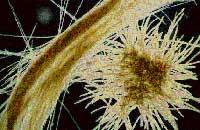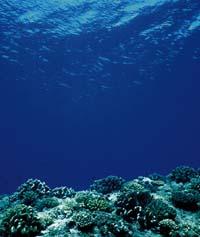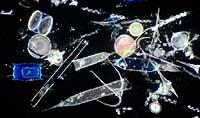Map of marine microorganisms
2010/03/02 Kortabitarte Egiguren, Irati - Elhuyar Zientzia

In the journal Science, two papers have been published on the distribution of microorganisms and their influence on the fixing of the nitrogen of the oceans, main producers of the oceans whose biological activity significantly affects the terrestrial geochemical processes.
MIT researchers have studied how the number of microorganisms in the oceans varies according to terrestrial latitude. To this end, they have developed a maritime traffic model. This model foresees the dynamics of phytoplankton populations. Researchers have found that in the tropical regions there are more species of these microorganisms than at the poles.
This model offers clear information about the distribution of microorganisms: most phytoplankton species are found in the middle latitudes, while in large latitudes there are fewer species, but more individuals.
In their second study, researchers at the University of California of the United States have analysed how microorganisms of the Pacific fix nitrogen in the group. This is because when the nitrogen fixation is high, a carbon capture occurs.
In addition to the traditional Trichodesmium Sea Fixative Nitrogen, researchers have identified two main groups of single-cell cyanobacteria that continuously fix nitrogen in the open ocean: UCYN-A and Crocosphaera watsonii. These new data can be introduced in models, which would allow for more accurate data of the nitrogen fixed in the oceans, as well as data on carbon capture.Image: Image: Oliver Jahn, Chris Hill, Stephanie Dutkiewicz, Mick Folletlows (MIT) and the ECCO2 (NASA) project.

Gai honi buruzko eduki gehiago
Elhuyarrek garatutako teknologia





